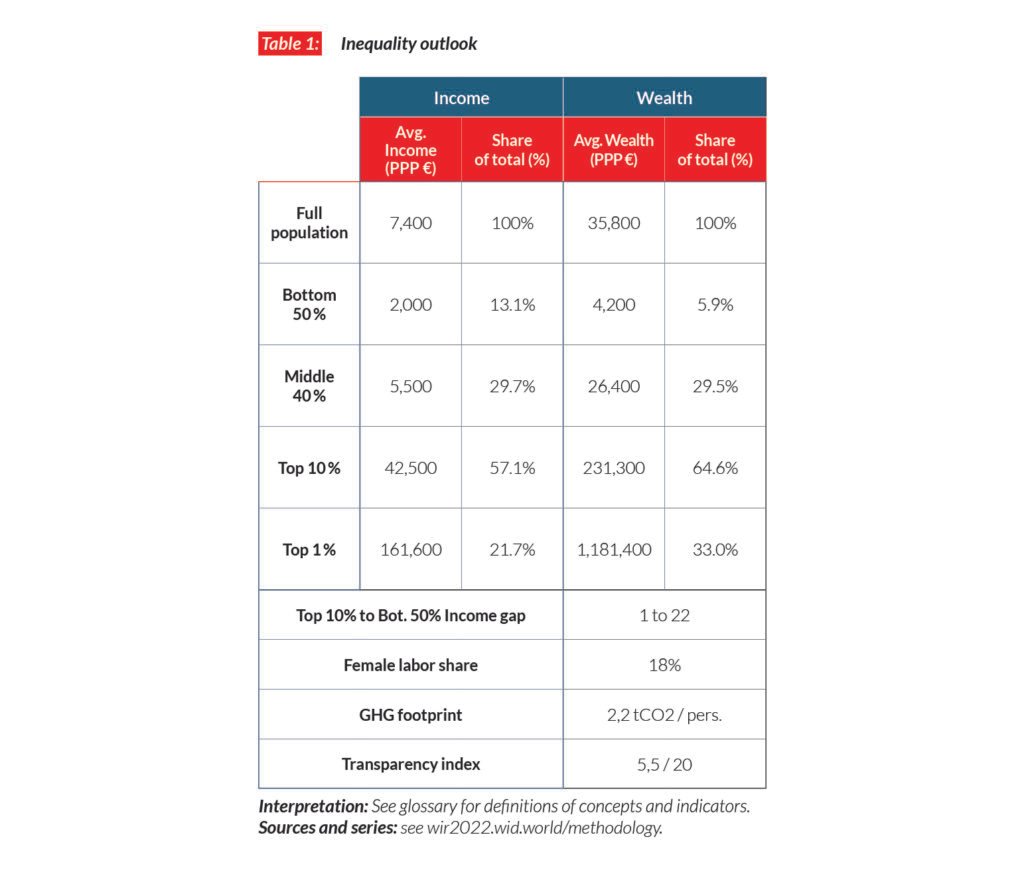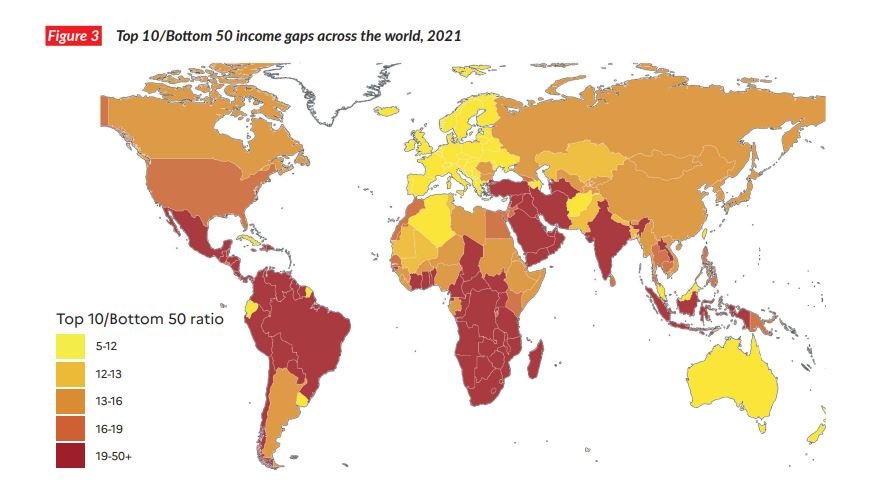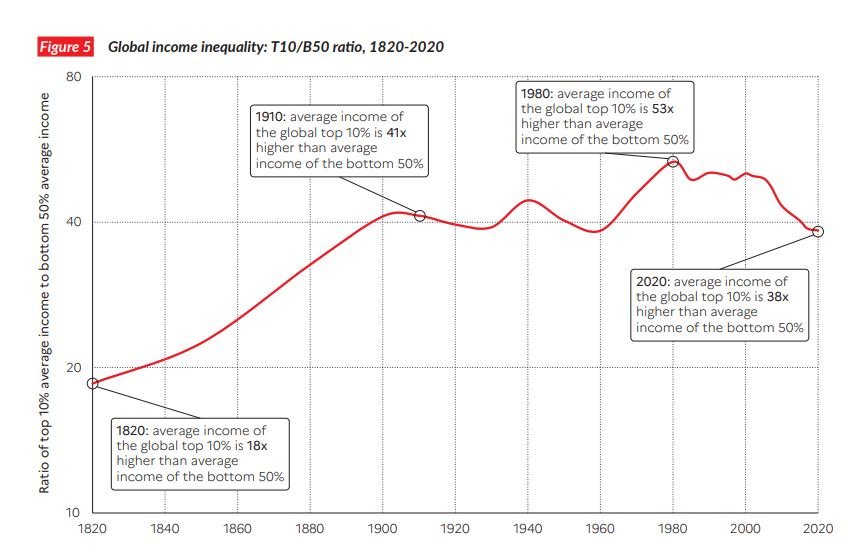India stands out as a poor and very unequal country, with an affluent elite. The average national income of the Indian adult population is INR204,20. While the bottom 50% earns INR53,610, the top 10% earns more than 20 times more i.e INR1,166,520. Global Inequality Report says.
According to the Global inequality reports, the top 10% hold 57% of total income. While the top 22% hold 1% of total national income. While the bottom 50% share has gone down to 13%.

Global Wealth Inequality
The poorest half of the global population barely owns any wealth at all, possessing just 2% of the total. In contrast, the richest 10% of the global population own 76% of all wealth.
The global 50% captures 8% of total income measured at Purchasing Power Parity. People in the global bottom 50% own 2% of the wealth. The global top 10% owns 76% of total Household wealth and captures 52% of total income in 2021.
Inequality varies significantly between the most equal region (Europe) and the most unequal (the Middle East and North Africa i.e. MENA). In Europe, the top 10% income share is around 36%, whereas in MENA it reaches 58%. In East Asia, the top 10% makes 43% of total income, and in Latin America, 55%.


Top 10 Vs Top 50
The average income of the top 10% and of the bottom 50%, more than doubled between 1820 and 1910. It is stabilized at around 40 between 1910 and 2020.

Share of Global Income
The share of global income going to the top 10% of highest incomes has fluctuated around 50-60%. The share going to the bottom 50% of lowest incomes have generally been around or below 10%. It rose between 1820 and 1910 and shows little long-run trend between 1910 and 2020.
Contemporary income and wealth inequalities
The richest 10% of the global population currently takes 52% of global income, whereas the poorest half of the population earns 8.5% of it. On average, an individual from the top 10% of the global income distribution earns USD122,100 per year, whereas an individual
from the poorest half of the global income distribution makes USD3,920 per year.
Global inequalities are close to the early 20th century
The gap between the average incomes of the richest 10% of countries and the average incomes of the poorest 50% of countries dropped from around 50x to a little less than 40x.
Inequalities increased significantly within countries. The gap between the average incomes of the top 10% and the bottom 50% of individuals within countries has almost doubled, from 8.5x to15x.

Global Income Inequality: 1820-2020
Global inequalities seem to be about as great today as they were at the peak of Western imperialism in the early 20th century.
The share of income presently captured by the poorest half of the world’s people are about half what it was in 1820, before the great divergence between Western countries and their colonies.

Nations getting richer, governments go poor
Over the past 40 years, countries have become significantly richer, but their governments have become significantly poorer. The share of wealth held by public actors is close to zero or negative in rich countries. The totality of wealth is in private hands.
This trend has been magnified by the Covid crisis, during which governments borrowed the equivalent of 10-20% of GDP, essentially from the private sector.
The currently low wealth of governments has important implications to tackle inequality in the future, as well as the key challenges of the 21st century such as climate change.








